Options for Change was a restructuring of the British Armed Forces in summer 1990 after the end of the Cold War.

London District (LONDIST) is the name given by the British Army to the area of operations encompassing the Greater London area. It was established in 1870 as Home District.

Colchester Garrison is a major garrison located in Colchester in the county of Essex, eastern England. It has been an important military base since the Roman era. The first permanent military garrison in Colchester was established by Legio XX Valeria Victrix in AD 43, following the Roman conquest of Britain. Colchester was an important garrison town during the Napoleonic Wars and throughout the Victorian era. During the First World War, several battalions of Kitchener's Army were trained there.
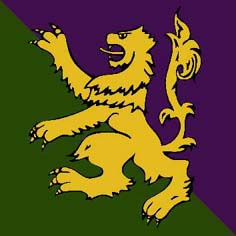
HQ 51st Infantry Brigade and Headquarters Scotland is a Regional Point of Command, Brigade of the British Army.

The Lincolnshire Yeomanry was a volunteer cavalry unit of the British Army formed in 1794. It saw action in the Second Boer War and the First World War before being disbanded in 1920.

The Museum of Lincolnshire Life is a museum in Lincoln, Lincolnshire, in the UK. The museum collection is a varied social history that reflects and celebrates the culture of the county of Lincolnshire and its people from 1750 to the present day. Exhibits illustrate commercial, domestic, agricultural, industrial and community life. The story of the Royal Lincolnshire Regiment and Lincolnshire Yeomanry is explained and illustrated by a variety of methods.
In September 1939, the British Army was in process of expanding their anti-aircraft and mobile assets. Among these new changes was the formation of Anti-Aircraft Command which was formed on 1 April 1939, and the 1st Armoured Division formed in 1937. The list below will include the British Army units, colonial units, and those units which were in the process of formation.
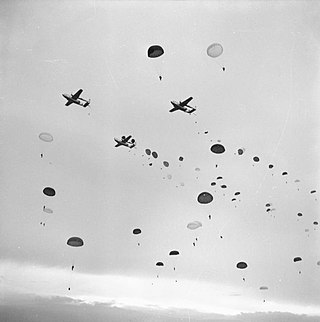
The 16th Airborne Division was an airborne infantry division of the British Territorial Army. It was first commanded by Major-General Roy Urquhart, and had its divisional headquarters in London.
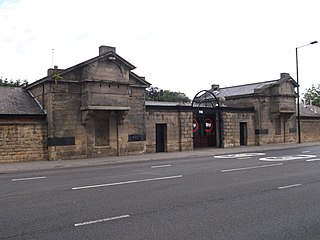
Fenham Barracks is a military installation in Barrack Road, Newcastle upon Tyne, Tyne and Wear, England.

Fulwood Barracks is a military installation at Fulwood in Preston, Lancashire, England. It is set to close in 2030.

Sobraon Barracks is a military installation in Lincoln, England. It is currently occupied by the 160 (Lincoln) Squadron Royal Logistic Corps and Lincolnshire Army Cadet Force.

The Mitcham Road Barracks is an Army Reserve centre in Croydon, London, with a history dating back to 1794.
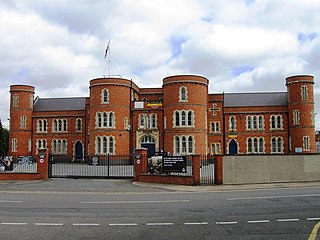
The Clare Street drill hall is a military installation in Northampton, Northamptonshire. It is a Grade II listed building.

The Old Barracks is a former military installation in Sandon Road, Grantham. It is a Grade II listed building.

The King's Road drill hall, sometimes referred to as the Old Cavalry Barracks, is a former military installation in King's Road in Bury St Edmunds. It is a Grade II listed building.

The Church Street drill hall is a former military installation in Brighton. It is a Grade II listed building.

The Tower Street drill hall is a military installation in York. It lies on Tower Street, in the city centre.

The Yorkhill Parade drill hall is a former military installation in Glasgow.
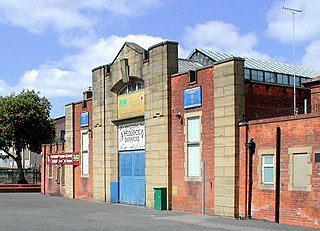
Wenlock Barracks is a military installation on Anlaby Road in Kingston upon Hull, England.
The following is a hierarchical outline for the structure of the British Army in 1989. The most authoritative source for this type of information available is Ministry of Defence, Master Order of Battle, and United Kingdom Land Forces, HQ UKLF, UKLF ORBAT Review Action Plan, HQ UKLF, 1990.


















